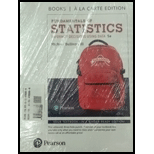
Tooth-Whitening Gum Smoking and drinking coffee have a tendency to stain teeth. In an effort to determine the ability of chewing gum to remove stains on teeth, researchers conducted an experiment in which 64 bovine incisors (teeth) were stained with natural pigments such as coffee for 10 days. Each tooth was randomly assigned to one of four treatments: gum A, gum B, gum C, or saliva. Each tooth group was placed into a device that simulated a human chewing gum. The temperature of the device was maintained at body temperature and the tooth was in the device for 20 minutes. The process was repeated six times (for a total of 120 minutes of chewing). The researcher conducting the experiment did not know which treatment was being applied to each experimental unit. Upon removing a tooth from the chewing apparatus, the color change was measured using a spectrophotometer. The percentage of stain removed by each treatment after 120 minutes is as follows: Gum A, 47.6%; Gum B, 45.2%, Gum C, 21.4%, Saliva, 2.1%.
The researchers concluded that gums A and B removed significantly more stain than gum C or saliva. In addition, gum C removed significantly more stain than saliva.
Source: Michael Moore et al. “In Vitro Tooth Whitening Effect of Two Medicated Chewing Gums Compared to a Whitening Gum and Saliva,” BioMed Central Oral Health 8:23, 2008.
- a. Identify the research objective.
- b. Is this an observational study or designed experiment? Why?
- c. If observational, what type of observational study is this? If an experiment, what type of experimental design is this?
- d. What is the response variable?
- e. What is the explanatory variable? Is it qualitative or quantitative?
- f. Identify the experimental units.
- g. State a factor that could affect the value of the response variable that is fixed at a set level.
- h. What is the conclusion of the study?
Want to see the full answer?
Check out a sample textbook solution
Chapter 1 Solutions
Fundamentals of Statistics, Books a la Carte Edition Plus MyLab Statistics with Pearson eText -- Access Card Package (5th Edition)
- A company found that the daily sales revenue of its flagship product follows a normal distribution with a mean of $4500 and a standard deviation of $450. The company defines a "high-sales day" that is, any day with sales exceeding $4800. please provide a step by step on how to get the answers in excel Q: What percentage of days can the company expect to have "high-sales days" or sales greater than $4800? Q: What is the sales revenue threshold for the bottom 10% of days? (please note that 10% refers to the probability/area under bell curve towards the lower tail of bell curve) Provide answers in the yellow cellsarrow_forwardFind the critical value for a left-tailed test using the F distribution with a 0.025, degrees of freedom in the numerator=12, and degrees of freedom in the denominator = 50. A portion of the table of critical values of the F-distribution is provided. Click the icon to view the partial table of critical values of the F-distribution. What is the critical value? (Round to two decimal places as needed.)arrow_forwardA retail store manager claims that the average daily sales of the store are $1,500. You aim to test whether the actual average daily sales differ significantly from this claimed value. You can provide your answer by inserting a text box and the answer must include: Null hypothesis, Alternative hypothesis, Show answer (output table/summary table), and Conclusion based on the P value. Showing the calculation is a must. If calculation is missing,so please provide a step by step on the answers Numerical answers in the yellow cellsarrow_forward
 MATLAB: An Introduction with ApplicationsStatisticsISBN:9781119256830Author:Amos GilatPublisher:John Wiley & Sons Inc
MATLAB: An Introduction with ApplicationsStatisticsISBN:9781119256830Author:Amos GilatPublisher:John Wiley & Sons Inc Probability and Statistics for Engineering and th...StatisticsISBN:9781305251809Author:Jay L. DevorePublisher:Cengage Learning
Probability and Statistics for Engineering and th...StatisticsISBN:9781305251809Author:Jay L. DevorePublisher:Cengage Learning Statistics for The Behavioral Sciences (MindTap C...StatisticsISBN:9781305504912Author:Frederick J Gravetter, Larry B. WallnauPublisher:Cengage Learning
Statistics for The Behavioral Sciences (MindTap C...StatisticsISBN:9781305504912Author:Frederick J Gravetter, Larry B. WallnauPublisher:Cengage Learning Elementary Statistics: Picturing the World (7th E...StatisticsISBN:9780134683416Author:Ron Larson, Betsy FarberPublisher:PEARSON
Elementary Statistics: Picturing the World (7th E...StatisticsISBN:9780134683416Author:Ron Larson, Betsy FarberPublisher:PEARSON The Basic Practice of StatisticsStatisticsISBN:9781319042578Author:David S. Moore, William I. Notz, Michael A. FlignerPublisher:W. H. Freeman
The Basic Practice of StatisticsStatisticsISBN:9781319042578Author:David S. Moore, William I. Notz, Michael A. FlignerPublisher:W. H. Freeman Introduction to the Practice of StatisticsStatisticsISBN:9781319013387Author:David S. Moore, George P. McCabe, Bruce A. CraigPublisher:W. H. Freeman
Introduction to the Practice of StatisticsStatisticsISBN:9781319013387Author:David S. Moore, George P. McCabe, Bruce A. CraigPublisher:W. H. Freeman





